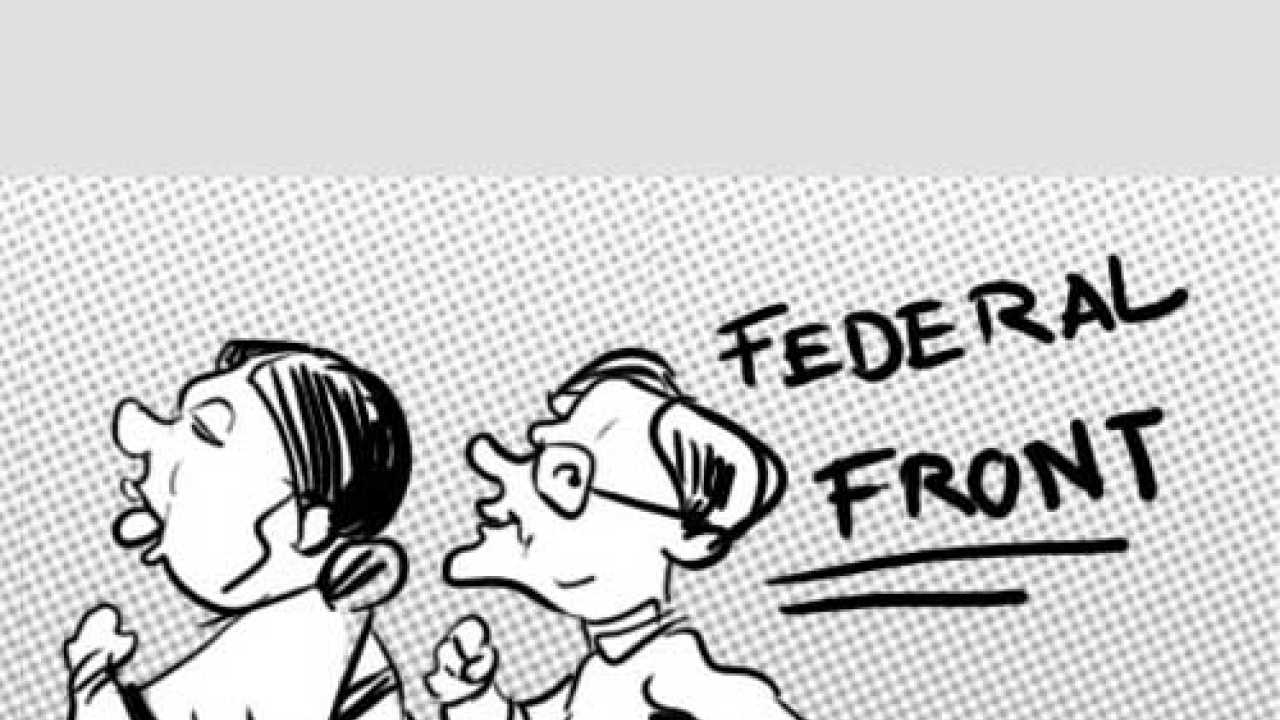
With Mamata Banerjee’s call for a ‘federal front’ being met with some enthusiasm in Bihar and Orissa, we face a moment that we have known before. The third front is a curious organism in the political scene of the Indian Union. It is a phoenix-like organism that intermittently threatens to rise from the ashes. More often than not, its rise is arrested, not by external factors but in the dishonesty of the initial threat itself. It is often the butt of jokes from the two so-called ‘national’ parties.
But like the materialist Carvaka school of yesteryears that was vilified by the Brahminical orthodoxy for centuries, a consistent ridiculing represents a consistent perception of threat. It is the rise of this front in its various avatars, representing, in part, an aspiration to true federalism that has rendered all but ineffective that most undemocratic ‘national’ tool — Article 356.
That elected state governments could be dismissed without a floor test by the centre may seem ridiculous today but not too long ago the Old Congress and Indira Congress used this tool as an undemocratic short-cut to unseat opposition-ruled state governments. There is much muck behind the copious tears of those who lament the receding relevance of the ‘national’ in politics. Others call it ‘parochial regionalism’ — a curious name for political forces that on average represent more people than most nations seated at the United Nations.
The rise of these forces, especially during the heady days of the NT Rama Rao’s conclave, the National Front (Rashtriya Morcha) and the United Front, have left an indelible impact on how politics is done in the Indian Union.
But that was yesterday. Does anything remain today of such a federalist third force beyond convenience and bluster? This is especially odd given that the present parliament represents one of the lowest points for the ‘national’ if one were to combine the seats/votes of the Indira Congress and the BJP. Neither governance nor corruption distinguishes the two ‘nationals’ from the others.
Whatever becomes of Mamata’s call, the thrust won’t die. Which is why the ‘federal front’ concept needs a positive agenda to outgrow its definition in oppositional terms — anti-Congress, anti-BJP. The Anandpur Sahib resolution as adopted in 1978 by the All India Akali Conference is an extremely important document — especially those portions that have implications beyond Punjab and the Sikhs. Made in the backdrop of a Union still reeling from the Emergency (which couldn’t have happened without centralization of power), the Anandpur Sahib resolution made a plea for progressive decentralization and an emphasis on federalism.
Major political forces of the time, including the Dravidian parties, CPI(M) and the Janata Party endorsed the decentralizing thrust. Ashok Mitra, the now disenchanted former CPI(M) finance minister, tried to organise opposition consensus around fiscal federalism — that revenues from a state should go directly to a state without any Delhi middleman. That fiscal issue still remains at the core of the Indian Union’s false federalism.
The centre has used its ill-begotten revenue wealth to divide and rule by handing out sops to pliant ‘regional’ forces. A federal front cannot distinguish itself by claiming it can manage the Union better within the present framework. It has to demand powers to be transferred from the Central and concurrent list to the state list. It has to revive the spirit of the Sarkaria commission and take it further. It has to have the imagination to offer the tantalising possibility of a reconceptualised India — a democratic federal Union.
The author is a brain scientist at the Massachusetts Institute of Technology.